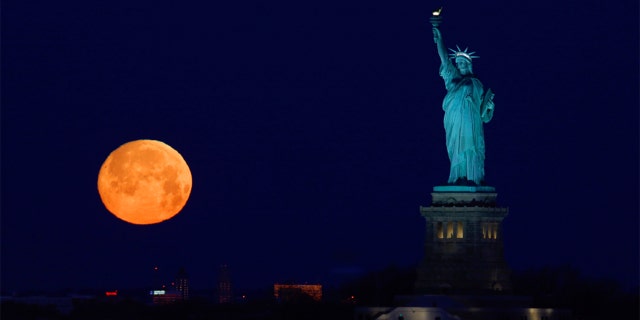NEWYou can now listen to Fox News articles!
The Statue of Liberty is an iconic colossal American sculpture associated with American exceptionalism, freedom, and identity.
Standing over New York Harbor on Liberty Island, the copper statue was initially given to the United States as a gift from the people of France in 1886. For decades, Lady Liberty has served as an important American cultural monument and is seen as a welcoming symbol to immigrants and visitors from around the world.
1. The German Empire tried to blow it up
The statue’s torch has a balcony that used to be accessible to the public; however, it has been closed since July 30, 1916, after the “Black Tom” explosion. Agents of the German Empire tried to destroy munitions in the New York Harbor that were being supplied to the allies during World War One. Fragments from the explosion hit the statue and lodged into the skirt and torch.
The estimated damage to Lady Liberty was $100,000, equivalent to $2.4 million in 2022. The attack was the largest sabotage to the United States by another country since Pearl Harbor.
The Statue of Liberty was originally gifted to America by France in the 19th century.
(iStock)
2. The statue is modeled after a Roman Goddess.
Lady Liberty is influenced by Roman symbolism and mythology. The statue is modeled after the Roman goddess of liberty, Libertas. Her left hand has an inscription in Roman numbers of the date the U.S. Declaration of Independence was signed. The statue’s dress is also in the form of a traditional Roman robe.
3. Lady Liberty’s original color was brown.
The original color of the Statue of Liberty was brown due to being made out of pure copper. However, after 1900 officials began to notice the statue developing a green patina color due to the oxidation of the copper skin. By 1906, the entire sculpture had turned green, and Congress made efforts to paint the statue back to its original color.
LADY LIBERTY CELEBRATES 130 YEARS ON US SOIL
However, the public objected to this decision, and a group of army engineers determined patina had no damaging effects on the structure. Therefore, the only part of the statue that was painted was the inside, while the exterior remained untouched.
4. Lightning bolts love the Statue of Liberty.
Despite the Statue of Liberty’s foundation of concrete and granite, approximately 600 lighting bolts strike the statue every year. The statue’s copper material and massive height make Lady Liberty more susceptible to lightning strikes. However, no severe or permanent damage has occurred from a lightning bolt.

Lady Liberty is one of the most popular tourist sites in America.
(Photo by Gary Hershorn/Getty Images)
LADY LIBERTY STANDS TALL – AMID LIGHTNING STRIKE IN NY HARBOR
5. It used to be a lighthouse.
President Grover Cleveland, in October 1886, put the Statue of Liberty under the control of the U.S. Lighthouse Board to act as a guiding light for ships in New York’s harbor. It served as a lighthouse for a few years until 1901, when it was to the sundered War Board, so its island could operate as a military fort.

The statue’s torch has been closed off to the public for over a hundred years after an explosion that rocked New York Harbor.
(AP Photo/Richard Drew)
Two years later, it was decommissioned and given to the National Park Services.
CLICK HERE TO GET THE FOX NEWS APP